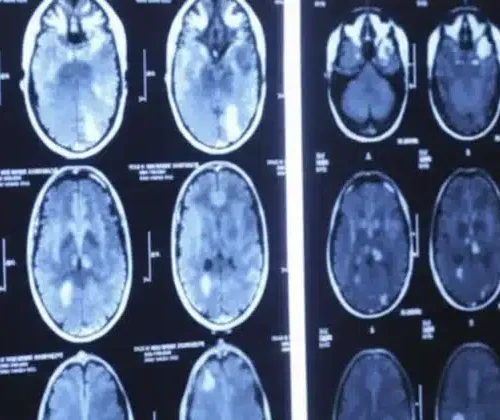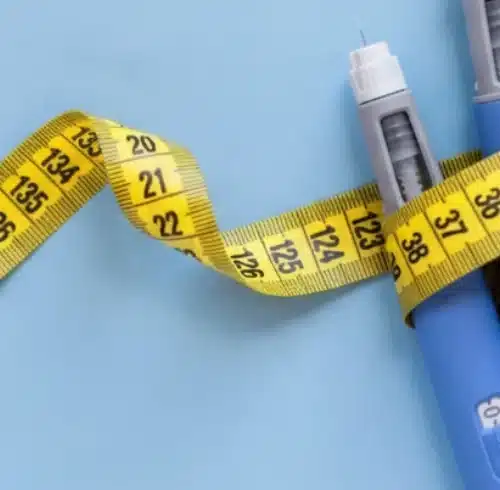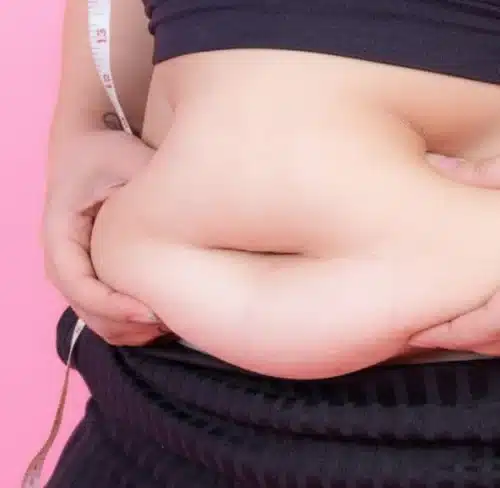Skin with more melanin can glow after peels, yet it demands precision. Our team builds a plan that respects pigment biology and minimizes inflammation from the first consult onward. We explain how BioRePeel fits into a safer, stepwise approach for Fitzpatrick IV–VI clients. You will see what we change before, during, and after sessions to keep tone stable. We also outline realistic timelines, adjunct options, and smart spacing between treatments.
Why darker skin needs a tailored peel game plan
Melanin produces natural protection, yet it also reacts quickly to irritation. Even modest inflammation can trigger melanocytes to overproduce pigment in susceptible areas. That feedback loop explains why post-inflammatory hyperpigmentation after procedures appears more often on deeper tones. Medical reviews emphasize careful selection of peel depth and vigilant sun protection for types III–VI, with priming when indicated (StatPearls). We translate those principles into a BioRePeel plan that values restraint and consistency over aggression.
Melanin biology and inflammation set the stage for PIH
Inflammation activates tyrosinase, which accelerates melanin production around micro-injury. Small stimuli like friction, harsh cleansers, or over-exfoliation can extend that signal during healing. Hyperpigmentation risk rises further if UV exposure persists, because ultraviolet radiation upregulates pigment pathways. Educational resources for patients also stress that dark patches often follow inflammation and sun together (MedlinePlus). We reduce triggers across every phase so pigment stays even while skin renews.
Where BioRePeel fits among superficial TCA options
BioRePeel belongs to the category of superficial TCA-based peels used for texture, pores, and tone. Superficial peels pair well with darker phototypes when technique stays conservative and recovery support remains strong. University centers explain that peel “intensity” matters because deeper wounding amplifies risks and downtime (UCSF Dermatologic Surgery). We use light passes, uniform application, and calibrated contact times to target the stratum corneum without provoking unnecessary inflammation. Those choices maintain results while avoiding endpoints linked with pigment swings.
Post-inflammatory hyperpigmentation: what sparks it after peels
PIH arises when melanocytes respond to cytokines released during repair. The response can look patchy because prior sun, acne, or friction primed certain zones to react more strongly. Application hot spots, accidental overlaps, and extended contact time can intensify micro-injury. Recovery shortcuts, like skipping sunscreen or scrubbing early flakes, compound that signal further. We manage each variable deliberately so risk stays low while improvement builds across sessions.
Triggers during prep, application, and healing
Priming helps equalize penetration, yet overly strong actives irritate and backfire. During application, overlapping strokes or chasing a dense white “frost” drives depth unpredictably. Healing turns fragile skin photosensitive, so even incidental sunlight can imprint excess pigment. Authoritative medical summaries call for priming, controlled technique, and strict photoprotection to limit dyschromia on types III–VI (StatPearls). We build that into your plan from the first visit.
How sun exposure magnifies uneven pigment after procedures
Ultraviolet exposure fuels melanogenesis while your skin repairs micro-injury. That combination increases the chance of mottling, especially along pre-existing discoloration. Patient education sources repeatedly underline sunscreen and shade while the epidermis renews (Harvard Health). We pair daily mineral SPF with a wide-brimmed hat recommendation during peak hours. That habit turns short-term sensitivity into long-term color stability.
Safety framework we use before treatment
Consultation covers medical history, prior peels, and any recent procedures that may alter barrier function. We review acne therapies, retinoids, exfoliants, and fragrances that can amplify irritation. Recent waxing, dermabrasion, or sun exposure changes timing because additive injury increases PIH odds. Antiviral prophylaxis may be discussed when history suggests recurrent herpes around treatment zones. Our clinicians document baselines with photos, then finalize a conservative series plan that prioritizes even tone.
History, medications, and recent procedures that alter risk
We screen for isotretinoin use, active eczema, and keloid tendency, because each shifts risk calculus. We ask about pregnancy and hormones, since melasma patterns might influence goals and timing. We also assess sunscreen habits because consistent use predicts better pigment control after peels. Education from academic and government sources highlights cumulative sun’s impact on discoloration patterns (Harvard Health). Those insights guide scheduling and pre-care coaching for clients on Fitzpatrick IV–VI.
Priming strategy for pigment control and barrier resilience
We recommend gentle cleanser changes and a bland moisturizer for barrier support two weeks before treatment. Low-irritation actives like azelaic acid or niacinamide sometimes help calm patterning without stoking inflammation. When PIH risk runs high, clinicians may prescribe short-term hydroquinone at 2–4% before and after sessions to restrain tyrosinase activity (StatPearls). We avoid stacking new acids or retinoids in the final pre-peel days to keep skin quiet. That measured priming improves uniformity and reduces surprises on application day.
Protocol changes during the peel session
Application begins on resilient zones and ends on perioral and periocular areas to limit pooling. We use non-overlapping strokes, feather borders, and protect creases with petrolatum to prevent concentration spikes. Contact time stays conservative on initial visits while we learn your skin’s response. Spot testing precedes full-face treatments when risk markers suggest extra caution on types IV–VI. That discipline maximizes improvement while keeping irritation within a safe therapeutic window.
These common risk factors influence how we tailor BioRePeel on melanin-rich skin. Use this table as a quick reference during consults and follow-ups. It connects what raises PIH risk with the exact adjustments we make and the home cues you’ll follow.
| Risk Factor |
Why It Matters |
Protocol Action |
Home Care Cue |
| Recent sun exposure |
UV primes melanocytes and magnifies inflammatory pigment signals |
Delay session; reinforce mineral SPF and hat use |
Daily SPF 30+; midday shade for two weeks |
| Active acne or irritation |
Inflamed sites elevate PIH risk after injury |
Spot-test; fewer coats; defer hotspots |
No picking; bland emollient until calm |
| Recent retinoid or exfoliant surge |
Compromised barrier deepens penetration unpredictably |
Hold actives pre-peel; shorten contact time |
Restart actives only after flaking stops |
| History of PIH or melasma |
Hyper-reactive pigment pathways respond strongly to inflammation |
Consider short hydroquinone priming; extend series pacing |
Report early darkening; tighten sun avoidance |
| Tight schedule or big event |
Rushed timelines push intensity and overlap risks |
Keep conservative endpoints; avoid stacking modalities |
Book series earlier; keep recovery days clear |
Application order, contact time, and endpoint targets on IV–VI
We aim for uniform erythema without dense, sheet-white frosting that signals deeper protein coagulation. Light, even coats with timed observation reduce the risk of patchy penetration. Cool air support calms stinging without forcing pressure that could disturb the barrier. We neutralize, cleanse gently, and then apply a bland emollient to seal hydration during the first days. Consistency here matters more than intensity when pigment stability is the top priority.
Why we spot-test and avoid “chasing frost” on deeper tones
Test spots preview how your melanocytes behave under controlled injury. Results guide coat count and timing so the first full session remains conservative. Chasing an endpoint frost invites uneven depth and extended healing, which amplifies PIH risk. Authoritative summaries tie dyschromia risk to deeper injury on darker phototypes and advise restraint (StatPearls). We keep technique boring by design, because boring heals beautifully on melanin-rich skin.
Recovery plan that keeps pigment stable
Healing starts with a fragrance-free emollient and strict no-picking rules to protect the barrier. Mineral sunscreen goes on every morning, then reapplies if you spend time outdoors. Antioxidant serums return only after flaking stops and sensitivity fades. Patient education sources emphasize that thoughtful sun behavior prevents new dark patches during recovery (Harvard Health). We reinforce these steps at each visit, so habits stay strong between appointments.
Anti-inflammatory support and sunscreen specifics
We choose zinc oxide or titanium dioxide filters for immediate, reliable coverage over sensitized skin. Hats, shade, and mindful timing of errands reduce incidental UV while the epidermis resets. If irritation spikes, we cool with compresses and simplify routines until calm returns. Government guidance warns consumers away from unsupervised, high-strength peel products because injury risk rises sharply (FDA). Our medical oversight keeps the process predictable and the recovery plan crystal clear.
When makeup, workouts, and sun return make sense
Makeup usually returns when flaking finishes and tenderness resolves, which we confirm during follow-up. Gentle exercise resumes earlier, yet hot yoga or saunas should wait until skin normalizes. Outdoor time remains possible with shade and reapplication, though midday sun deserves extra caution. Patient-facing resources underscore that photosensitive skin marks easily during this period (Harvard Health). We would rather move slower for one week than manage pigment surprises for months.
When to combine or separate treatments
Complementary procedures can boost outcomes, yet timing matters when PIH risk runs high. We stagger energy devices and peels by several weeks and never stack deep resurfacing in one sitting. Microneedling pairs thoughtfully with peels, yet sessions should not sit back-to-back on IV–VI. Our clinicians map a calendar that respects healing biology and your lifestyle. That pacing sustains progress while preventing compounding irritation.
Timing around microneedling and lasers to avoid PIH
We typically place a gap of several weeks between modalities, adjusting for your response. Each new stimulus restarts inflammation, so spacing protects tone while results accumulate. If texture remains the priority, we may schedule microneedling between peel blocks with adequate recovery. This plan recognizes that predictable collagen stimulation beats rushed stacking on darker tones. Clear instructions and check-ins keep scheduling stress-free throughout the series.
Supportive facials that hydrate without re-irritating
Hydration supports barrier repair, yet active exfoliants during the peel window stir trouble. We prefer gentle treatments that soothe, plump, and reinforce moisture without acids. A well-timed luxury facial several weeks after your peel can replenish water content beautifully. That option refreshes radiance while leaving melanocytes unprovoked during the crucial repair phase. Your aesthetician and clinician coordinate timing so every step works together.
3 Practical Tips
- Prime smart. Keep actives simple for two weeks pre-peel, then follow your tailored brightener plan.
- Protect daily. Wear mineral SPF and a hat during midday errands while healing.
- Pace progress. Expect a series with steady gains rather than dramatic single-session changes that court PIH.
Questions? We are here to help! Call 239-355-3294 and our team will personalize your plan.
FAQs
How many BioRePeel sessions make sense on IV–VI skin?
Most clients complete a series of several sessions, spaced to respect healing. Your plan adjusts based on observed reactivity and pigment goals.
Can I use brighteners while I’m in a peel series?
Yes, although we choose low-irritation options and cycle stronger agents carefully. Short courses of hydroquinone around sessions may be considered under supervision (StatPearls).
What if I see new dark patches after a peel?
Pause actives, increase sun protection, and contact us for an exam. Early intervention with calming care and guided brighteners usually settles pigment.
How soon can I schedule microneedling after BioRePeel?
We prefer a buffer of several weeks, then reassess your skin’s response. Spacing reduces cumulative inflammation that can trigger unwanted pigment.
What this means for your skin moving forward
Safe, effective peeling on melanin-rich skin values planning, restraint, and continuity. Our clinicians follow evolving dermatology guidance and update protocols as new data emerges. We also monitor FDA communications that impact home-use products and patient safety (FDA Drug Alerts). Fountain of Youth reviews new literature each quarter and adjusts checklists, consent language, and aftercare accordingly. That vigilance keeps your outcomes steady while your confidence in the process grows.
Want tailored advice before you book? Speak with our medical aesthetics team at 239-355-3294 ; we are happy to guide you.
For general readers who want definitions and baseline context about pigment conditions, a government-curated overview helps frame expectations (MedlinePlus). Education supports better decisions, yet individualized planning keeps your results on track. Our staff stays current on inclusive-skin research and integrates practical updates into everyday care. That mindset turns short, careful steps into durable, even-toned results. We look forward to crafting a plan that fits your skin, goals, and schedule.
Medically reviewed by Emily Hartman, MD, author at Fountain of Youth SWFL on September 15, 2025. Content was fact-checked by Emily Hartman against peer-reviewed research and government or academic sources; see in-text citations. This page follows our Medical Review & Sourcing Policy and undergoes updates at least every six months. Last updated September 15, 2025.



